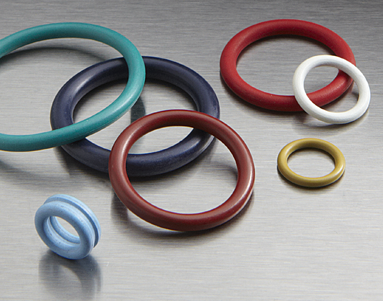
You're fully covered
Coated parts feature many advantages over uncoated parts. They can decrease friction, facilitate automatic assembly or help with identification. Dry (powder) coatings are typically used to treat parts for automatic assembly equipment. The powder coating is primarily to reduce the parts' tendency to stick together, forming a clump or mass. In order to counter this tendency, High Performance Seals provides dry powder coatings such as talc, mica, graphite, powdered PTFE and molybdenum disulfide. However, over time these coatings may foul assembly equipment which can require downtime for cleaning.
Wet coatings are similar to dry coatings since they are typically used to increase the efficiency of automatic assembly equipment. However, unlike dry coatings, these are aqueous in nature. High Performance Seals' primary wet coatings are silicone emulsions and soap & water mixtures. These wet coatings generally offer superior lubricity compared to dry coatings, but they can be somewhat messy. Take care to prevent migration across the shop floor.
Thin film coatings are sprayed, then baked for O-Rings and rubber parts. These coatings are typically semi-permanent, but can be removed with abrasion. Dry film coatings feature the best cleanliness and lubricity, however, the extra processing results in higher costs. High Performance Seals offers two types of thin film coatings, our proprietary HiSlip and PTFE. PTFE coating provides the added benefit of being colorable, allowing easy visual part identification.
High Performance Seals also offers our proprietary CC12 surface treatment for NBR rubber. This is a permanent surface modification by which the NBR rubber is halogenated in a chlorine solution. The CC12 process makes the surface durometer harder, which in turn permanently reduces the surface coefficient of friction.

